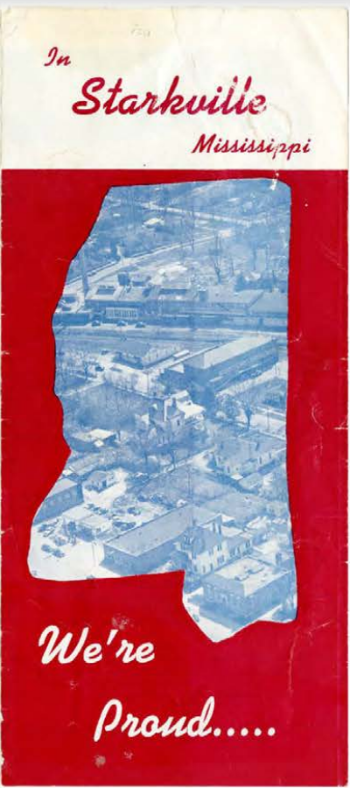The Place
Starkville, MS
Image: “African-Americans waiting for train, Starkville, 1/1923,” Robert and Sadye Wier papers, Special Collections Department, Mississippi State University”
Contents: History of Starkville | Demographics | Maps of Starkville, 1947-2010
History of Starkville
Starkville’s history is well established. It’s told as a heroic and progressive tale of Choctaw natives giving way to white pioneers who built the original Boardtown (renamed Starkville in 1835), fought for the Confederacy, and then gradually adapted their town to suit the changing circumstances of the post-Reconstruction South. Thanks to their efforts, which were aided by the founding of Mississippi A & M College (now Mississippi State University) in 1878, twentieth-century Starkville grew to become an important center of dairying and textile production; it was home to the Cooperative Creamery, the John M. Stone Cotton Mill, and the Borden Milk Plant, the largest Borden facility in the South. As residents watched their town grow, they boasted that Starkville was “the dairy capital of the South.” Today, with the former textile mill converted into a newly-renovated conference center, and the Borden Milk Plant transformed into retail space, it is Mississippi State University that frames Starkville’s current identity as “Mississippi’s college town.”
While all residents take pride in the town’s success, questions remain. Where are Starkville’s African American citizens to be found in this heroic and progressive history? The answer is mostly nowhere; local histories barely acknowledge that African Americans existed in the town or region, or that they made significant contributions to the town’s growth and success. African Americans were present in sizable numbers from the town’s founding. Starkville’s home county, Oktibbeha, had a majority African American population in 1840 and continued to have one until 1950. Slave labor thus built Boardtown, and continued to sustain Starkville, its local businesses, and the plantations and farms that surrounded it until the Civil War. After the war, free African Americans established their own churches, schools, and businesses inside the town; they purchased land, built homes, and farmed just outside it. After the founding of Mississippi A & M, many also worked for the University, even though they could not attend it. Despite the strictures imposed by Jim Crow segregation, they made every effort to advance themselves and their families while also contributing to Starkville’s growth. Finally, when time came during the 1960s, they pushed for change by staging their own civil rights movement. Telling Starkville’s history from the vantage point of its African American residents thus refocuses the story. It emphasizes the significance of race in shaping the history of this town and relationship among its residents; it also highlights different historical events as turning points in the town’s past. Most important of all, it challenges the progressive story the town tells about itself.
Demographics
Unlike many places in Mississippi, Starkville saw significant population growth during the twentieth century, expanding from 1,986 people in 1900 to just about 25,000 in 2013. The 1910s were the only decade where the town’s population declined. Some of this growth undoubtedly reflected the broad statewide shift of people from rural to urban locations during the twentieth century. But the presence of a growing state university and industries such as the Borden Milk Plant, also served as major draws, putting their own unique stamps on Starkville’s growth.
As the maps below detail, Starkville was also a racially segregated town. At the time of the Civil Rights Movement, African Americans were heavily concentrated in the northwest corner of town, as they had been for some time. Today, too, this remains a predominantly African American neighborhood.
| Year | Total Population | Whites | % | African Americans | % |
|---|---|---|---|---|---|
| 1960 | 9,041 | 6226 | 68.8% | 2815 | 31.20% |
| 1970 | 11,369 | 8479 | 74.5% | 2798 | 24.60% |
| 1980 | 15,169 | 11,019 | 72.6% | 3,823 | 25.20% |
| 2013 | 24,775 | 14,865 | 59.6% | 8,671 | 34.60% |
